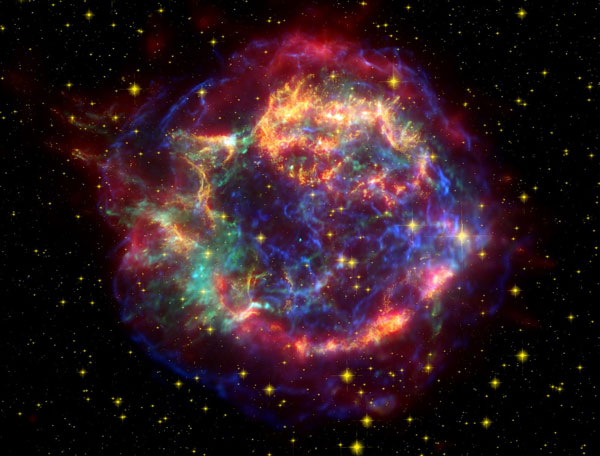New map of star systems
NASA has announced a new map with more than 560 million stars, galaxies and asteroids, many of which have never been known before.
The atlas includes over 18,000 images captured by WISE space telescope, according to Wired Science, NASA.
With WISE, scientists discovered Y-dwarf dwarfs, indicating the faintest stars in brown dwarf families. If compared to the sun standards, they are extremely cool.

One of the images captures the remnants of the supernova explosion Cassiopeia A
A Y dwarf discovered in 2011 has a temperature of only 26-27 degrees Celsius, while our sun has a surface temperature of about 5,500 degrees Celsius.
Experts have also discovered the first asteroid to orbit the earth, called a trojan asteroid. Neptune, Jupiter and Mars also have trojan asteroids, but Earth's trojan asteroids are harder to detect because they only appear during the day.
For those who are worried about the apocalypse coming from space assassins, WISE brings many good news. A survey of near-asteroids shows that the number of medium-sized celestial bodies is less than previously speculated by experts.
- Discover strange binary star systems in the universe
- Mysterious binary star systems
- Detecting super-fast star systems disrupts conventional physics theory
- How to get us to another star system 40,000 billion kilometers from Stephen Hawking Earth
- Prevent meteors with sunlight
- The adventurous world sends more messages to aliens
- Unique binary star system is extremely rare in the universe
- Tatooine planet in Star Wars really exist?
- The scientists were skeptical of discovering Star Death
- Brown stars don't go with normal stars
- For the first time, a star has been discovered in a star
- The mysterious age of the mysterious star
 Van Allen's belt and evidence that the Apollo 11 mission to the Moon was myth
Van Allen's belt and evidence that the Apollo 11 mission to the Moon was myth The levels of civilization in the universe (Kardashev scale)
The levels of civilization in the universe (Kardashev scale) Today Mars, the sun and the Earth are aligned
Today Mars, the sun and the Earth are aligned The Amazon owner announced a secret plan to build a space base for thousands of people
The Amazon owner announced a secret plan to build a space base for thousands of people